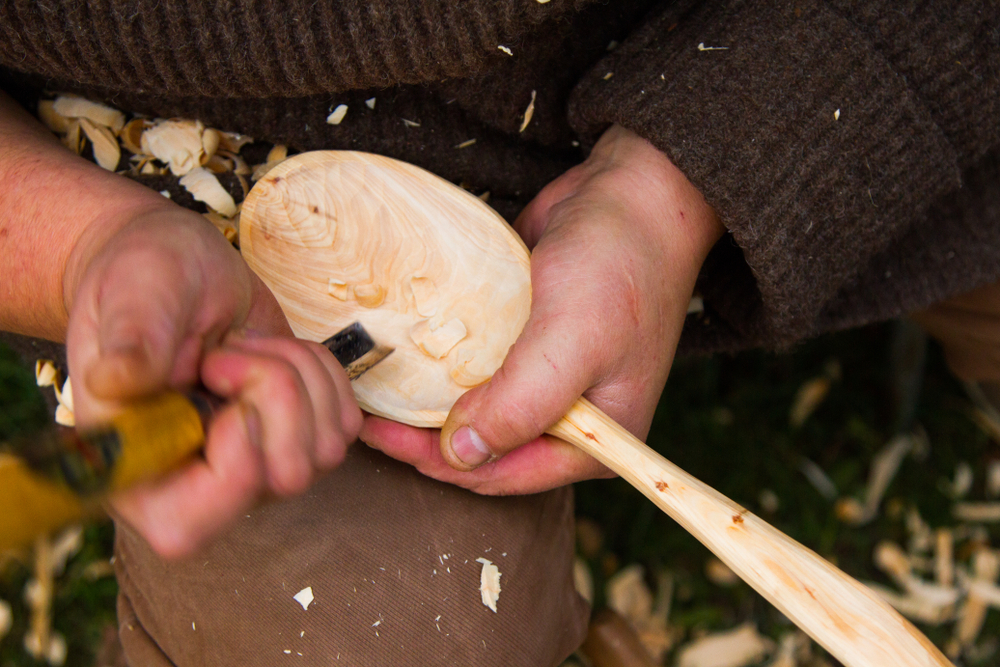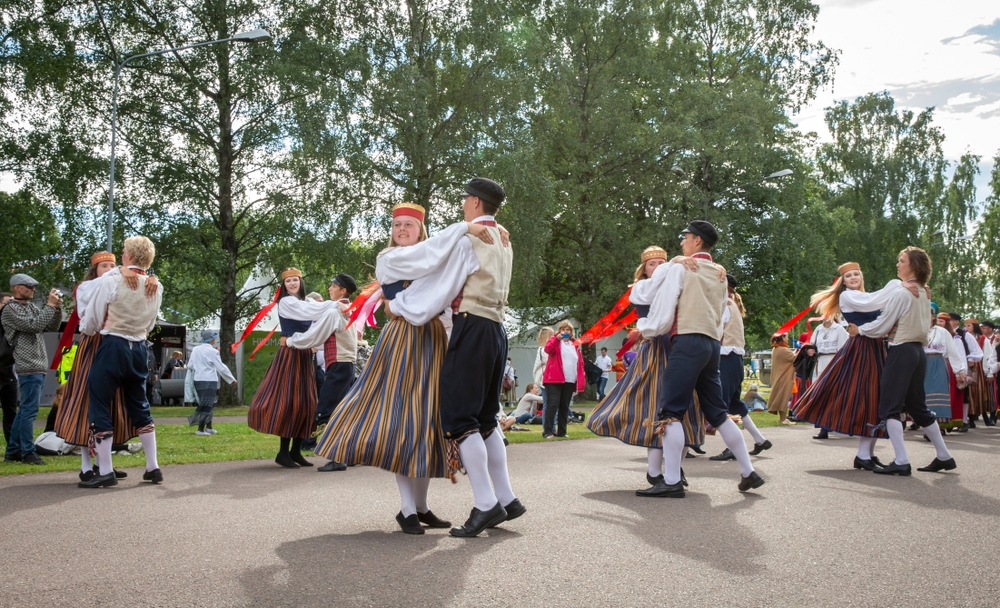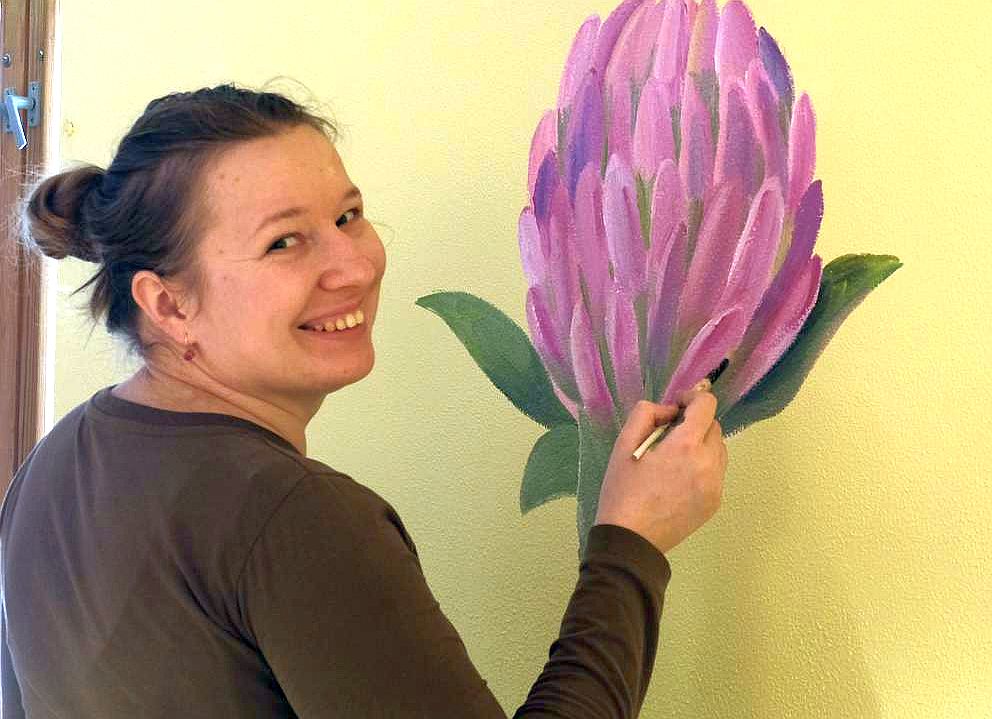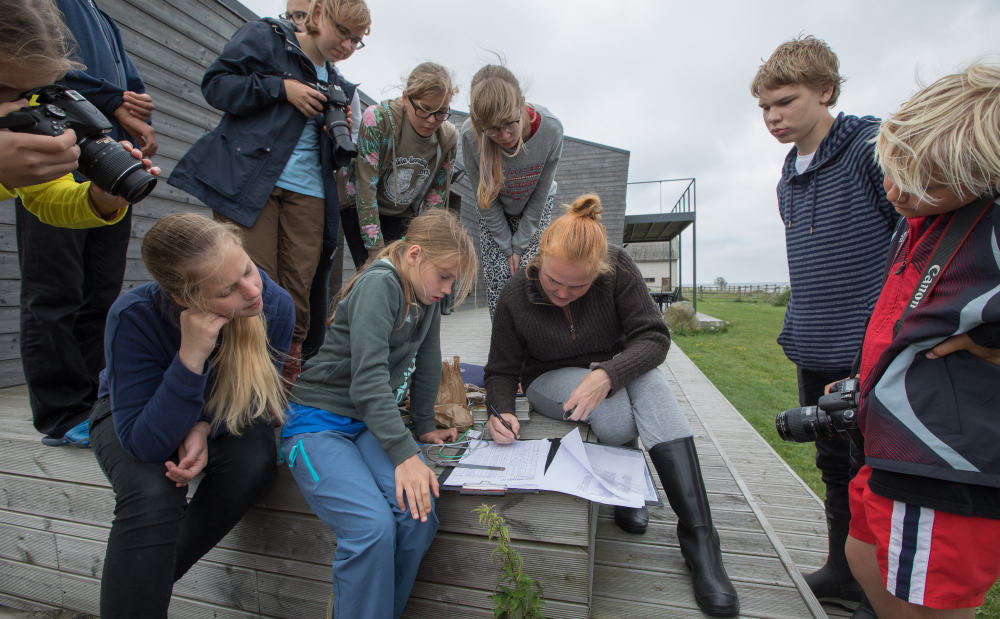Historically societies have used shared stories such as myths, legends, fables, and oral histories to communicate their values, beliefs, and traditions. These tales not only entertain but also serve as communal touchstones that reinforce shared values and bind members of the culture together. The following stories, while not traditional, have been created to illustrate some of the cultural values of Estonian people.
An Estonian Tale
Story |
Cultural Values Illustrated |
|
In a charming village surrounded by the lush forests of Estonia, an experienced fisherman named Toomas set out early in the morning, his boat gently rocking on the calm Baltic Sea. As he cast his nets with practiced ease, his thoughts were as much on the rhythms of the sea as on the upcoming village celebration.
|
Nature Naturally: Estonians have a deep connection with nature, valuing environmental conservation and sustainable living. Reflected in their daily activities, from fishing practices to forest management, the harmony between human activity and nature is a key aspect of Estonian culture, emphasizing responsibility toward the environment and its preservation for future generations. |
|
Toomas’s daughter, Kertu, was a teacher in the local school. She spent her mornings imparting knowledge about Estonian history and folklore to her eager students, instilling in them a sense of pride in their heritage.
|
Honoring the Past: History and tradition hold significant importance in Estonian culture. Education systems and family teachings emphasize the understanding of Estonia's past. This deep-rooted respect for history and traditions is seen as vital in maintaining national identity and instilling a sense of pride and belonging in future generations. |
|
The village was preparing for Laulupidu, the national song festival. Toomas, a choir member, and Kertu, a dancer, were both participating, representing the village's commitment to this cherished cultural event.
|
Teamwork: The Estonian Song Festival is a symbol of unity and cooperation. Involving thousands of participants from across the country, it exemplifies Estonia's collective spirit. It demonstrates the importance of working together toward a common goal, showcasing a national ethos of unity through cultural expression. |
|
In the heart of the village, an elderly craftsman, Mart, was busy creating traditional wooden handicrafts. His work was not only a means of livelihood but also his way of preserving and passing on age-old Estonian crafting techniques.
|
Artistic Connection: Craftsmanship and the preservation of traditional skills are deeply valued in Estonia. Artisans play a crucial role in keeping traditional crafts alive. These practices are not merely seen as economic activities but as vital parts of cultural heritage, representing a link between the past and present. |
|
As the festival approached, Toomas and Kertu collaborated with other villagers to organize a communal feast. Everyone contributed what they could, embodying the village's spirit of generosity and community support.
|
Doing Life Together: In Estonian culture, there is a strong sense of community and an ethos of mutual support and generosity. Community events often involve collective contributions, where everyone participates according to their ability. This reinforces social bonds and reflects a communal approach to life, where helping and supporting each other is a fundamental value. |
|
The day of Laulupidu arrived, and the village's choir and dancers, including Toomas and Kertu, joined thousands of others in a powerful demonstration of Estonian cultural pride. The harmonious voices and synchronized movements were a testament to their shared identity and love for their homeland.
|
Patriotic People: Pride and a strong sense of national identity are at the core of Estonian values. Cultural events are expressions of national identity and unity. Through these cultural manifestations, Estonians express their pride in their heritage and their sense of belonging to a larger community. |
|
As they returned to the village, the community gathered to celebrate their successful participation. This gathering was not just a party but a reinforcement of the social ties that bound them together.
|
Togetherness: Social harmony and inclusivity are key elements of Estonian society. Community gatherings are important for maintaining social ties and fostering a sense of inclusivity. They serve as platforms for individuals to connect, share experiences, and strengthen communal bonds, reflecting the value Estonians place on social cohesion. |
|
Kertu, inspired by the festival, decided to start a project to document the village’s history and traditions, ensuring their preservation for future generations. Her initiative was met with enthusiasm and support from the villagers.
|
Passing It On: In Estonia, there is a strong emphasis on preserving local history and traditions. Documenting and preserving local histories ensure that the unique aspects of Estonian culture are not lost but are passed on to future generations. |
|
Toomas, seeing the enthusiasm of the younger villagers, started mentoring a group of young fishermen, teaching them the sustainable practices that had been handed down to him.
|
Start 'Em Young: Mentorship and the transmission of knowledge are important in Estonian culture. Experienced individuals take it upon themselves to pass on skills and wisdom to the younger generation. |
|
The group of fishermen initiated a project to create a community garden. It symbolized their deep connection to the land and the seasons, a value integral to Estonian life. It also was a way for the villagers, especially the younger generation, to engage actively with the land, learning about and respecting the delicate balance of nature. |
Stewardship: In Estonia, there is a profound understanding of and respect for the natural cycles and the land. This value goes beyond agriculture; it's about living in harmony with the seasons and responsibly stewarding the land. The community garden project reflects this ethos, demonstrating a commitment to sustainability and ecological balance. |
A Story of Estonian Traditions
Story |
Cultural Values Illustrated |
|
In an Estonian village, surrounded by ancient forests, the community was alive with excitement for jaanipäev, the cherished midsummer festival. Liina, who had returned to her ancestral village from the city, joined her grandmother in the age-old tradition of weaving wreaths from the wildflowers and ferns they had gathered in the meadows.
|
The Great Outdoors: Estonian traditions often incorporate elements of nature, reflecting a deep connection with the environment. It symbolizes the Estonian respect and reverence for the natural world, integrating its beauty and significance into cultural celebrations. |
|
As they worked, Liina’s grandmother shared stories of past jaanipäev celebrations, passing down folklore and family history, just as her ancestors had done.
|
Significant Sharing: Storytelling is an essential part of Estonian culture, serving as a bridge between past and present. Through these stories, wisdom, traditions, and historical insights are passed down, keeping the rich tapestry of Estonian folklore and family heritage alive across generations. |
|
In the village square, preparations for the traditional bonfire were under way. Liina and others in the village contributed to building the fire, which symbolized light triumphing over darkness.
|
All Together: Communal rituals are focal points of community bonding in Estonia. Such traditions bring people together, fostering a strong sense of community and shared purpose. These events reinforce communal ties and emphasize the value of unity and collective effort. |
|
On the evening of the festival, villagers young and old gathered around the bonfire, their voices joining in traditional songs that echoed through the night.
|
Vocal Unification: Singing, particularly in a group, is a powerful expression of community and collective identity in Estonia. Traditional songs, passed down through generations, are a celebration of shared history and reaffirmation of the community's unity and cultural heritage. |
|
As part of the festivities, Liina took part in the traditional leap over the bonfire, a ritual embraced by the community for generations, believed to bring good fortune and protection. Through her participation in the Jaanipäev festivities, Liina reconnected with her roots, experiencing firsthand the enduring customs and rich traditions that form the fabric of her Estonian heritage. |
Recognizing Roots: Many Estonian cultural rituals are steeped in beliefs that blend the natural with supernatural. These practices demonstrate respect for ancient customs and recognition of the mystical elements intertwined with everyday life. They are an acknowledgment of the unseen forces and the heritage that shapes Estonian cultural identity. |
An Estonian Artistic Journey
Story |
Cultural Values Illustrated |
|
In the bustling heart of Tallinn, Estonia's capital, an emerging Estonian artist named Maarja was setting up her first solo exhibition in a renowned local gallery. Her paintings, a series of vibrant landscapes, captured the serene essence of Estonia's natural beauty—from the sprawling forests to the calm Baltic shores.
|
Meaningful Art: Estonian artists, deeply influenced by their surroundings, often incorporate elements of nature into their work. It reflects their reverence for and deep connection with the natural environment. Art becomes a medium through which the beauty and serenity of the Estonian landscape are celebrated and preserved. |
|
The exhibition included an innovative piece: an abstract rendition of a traditional Estonian folk tale, showcasing Maarja’s commitment to breathing new life into Estonia’s rich folk heritage through her modern artistic lens.
|
Keeping the Past Alive: In Estonia, there is a valued tradition of reinterpreting and revitalizing folk art. Artists play a crucial role in this process, infusing traditional stories and motifs with contemporary styles and perspectives. This practice not only preserves these folk traditions but also ensures their relevance and resonance with modern audiences. |
|
A local composer, inspired by Maarja's art, proposed a collaboration where her visuals would be accompanied by a musical piece blending traditional Estonian sounds with contemporary symphonic elements, reflecting the Estonian value of interdisciplinary artistic endeavors.
|
Mix and Match: Estonia values the fusion of different artistic disciplines, believing that such collaborations enrich and deepen the artistic experience. Combining visual arts with music is a testament to this value, demonstrating a creative openness and the desire to explore new, innovative ways of artistic expression. |
|
Among the guests were Estonian filmmakers, capturing the essence of Maarja’s exhibition for a documentary. Their project was part of a larger initiative to support and showcase emerging Estonian artists, highlighting the community’s commitment to nurturing new talent.
|
Up-and-Coming Talent: The Estonian art scene is characterized by its encouragement and support of young talent. It is a reflection of the value placed on continual renewal and growth within the arts community. It ensures that fresh, innovative perspectives continually rejuvenate the Estonian art world. |
|
As the exhibition drew to a close, Maarja felt a profound connection to her cultural roots and a sense of pride in contributing to Estonia's rich artistic heritage. Her journey exemplified the Estonian ethos of valuing individual creativity as a means of personal and cultural expression. |
Open to Self-Expression: In Estonia, there is a strong emphasis on individual creativity and expression in the arts. Artists are encouraged to explore and express their unique visions. Personal artistic expression is crucial for the vibrancy and diversity of the national cultural landscape. |
Copyright © 1993-2025 World Trade Press. All rights reserved.








